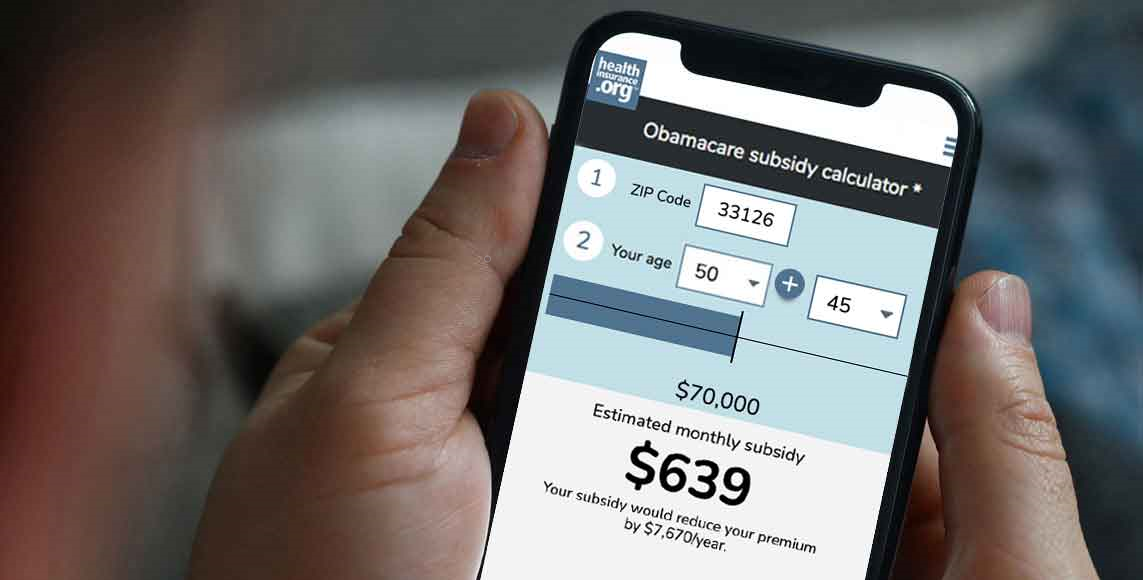
Key takeaways
- COBRA is one way to extend your employer benefits after becoming self-employed
- The ACA removed barriers to coverage traditionally faced by the self-employed
- ACA offers protections for those with pre-existing conditions
- Medicaid may be available if you don’t expect to earn much when you start out
- Employer-sponsored health insurance through a spouse may provide affordable coverage
- The self-employed can deduct their health insurance premiums
The self-employed historically faced a set of unique challenges in finding and keeping health insurance. But the Affordable Care Act (aka Obamacare) has made coverage more accessible, and also more affordable for many people, thanks to subsidies available in the ACA health insurance exchanges/Marketplace. Learn more in our Guide to Self-Employed Health Insurance.
Here’s what you need to know about health insurance if you’re self-employed or transitioning to self-employment:
Leaving your job but staying covered
Q: If I become self-employed, can I keep the health insurance I already have?
A: The brave individuals who become self-employed often preserve their health coverage by taking the initial step of extending their employer-sponsored health benefits through COBRA. The Consolidated Omnibus Budget Reconciliation Act of 1985 allows workers to extend those benefits for up to 18 or 36 months, depending on the circumstances.
The downside: employers no longer pay their portion of the plan’s premium. That means you’ll pay the full cost of the plan, including the share that your employer used to pay — which averages about three-quarters of the total cost1 — plus a 2% administrative fee. This could mean a very significant increase in the amount you pay each month for your coverage, compared with the amount that was being payroll deducted while you were employed.
Note that if you work for a company with fewer than 20 employees, COBRA does not apply. But state continuation laws in many states create COBRA-like provisions for people who work for small employers. Check with the Insurance Commissioner in your state to see if state continuation is available to you.
Coverage options – beyond COBRA
Q: Beyond COBRA, what are coverage options for the self-employed?
A: Now that the Affordable Care Act has been implemented, the main barriers that used to prevent people from getting coverage in the individual health insurance market have been removed. Prior to 2014, individual health insurance was medically underwritten in all but five states.
That meant that people with pre-existing conditions often faced challenges in obtaining coverage in the individual market. The health insurance carriers could reject their applications altogether, or offer coverage at a higher rate or with an exclusion on the pre-existing condition.
That’s all changed now. Since 2014, all new individual market policies have been guaranteed issue, and rates cannot vary based on medical history or gender (they can only vary based on age, zip code, and tobacco use). So if you’re self-employed, you can select from any of the individual market plans available in your area, either on or off the exchange/Marketplace.
Subsidies are only available in the Marketplace, and enrollment windows apply regardless of whether you’re obtaining coverage through the Marketplace or directly from an insurance company. You can enroll in a plan during open enrollment, or during a special enrollment period triggered by a qualifying life event.
If you have employer-sponsored insurance and you’re leaving your job to become self-employed, the loss of your employer-sponsored coverage counts as a qualifying event, even if you have the option to continue your coverage with COBRA (ie, you can go with COBRA, or you can pick a plan in the individual market, on or off-exchange).
And Marketplace plans have proven popular with self-employed Americans. According to the U.S. Treasury Department, 18% of self-employed people and small business owners obtained Marketplace health coverage in 2022. That was three times as high as the percentage of the total under-65 adult population.2
If you already have coverage in the individual market (because your employer didn’t offer coverage, or because you preferred an individual-market plan), you can keep what you have throughout your transition to self-employment.
- If you are already enrolled in a plan through the exchange, you’ll have an opportunity to start receiving subsidies if your switch to self-employment results in an income that’s newly eligible for subsidies (income means modified adjusted gross income, and the calculation is specific to the ACA).
- If your current coverage is an off-exchange plan, you can only switch to an on-exchange plan (where subsidies are available) if you experience a qualifying event. A change in income that makes you newly eligible for subsidies is considered a qualifying life event, so you may find that you’re able to switch to an on-exchange plan and thus able to start receiving subsidies.
Protections for those with pre-existing conditions
Q: My Employer-sponsored insurance covered my pre-existing condition. Can I still get coverage for it if I become self-employed?
A: Yes. Regardless of whether you continue your coverage with COBRA/state continuation or switch to an individual market plan, you’ll continue to have coverage for pre-existing conditions. Medical underwriting no longer applies in the individual market — thanks to the ACA — so the application won’t even ask about your medical history.
It’s important, however, to pay close attention to the details of whatever policy you’re considering. Be aware that drug formularies (covered drug lists) vary from one carrier to another, so the fact that a new plan covers your pre-existing condition won’t necessarily mean that they’ll cover the medication you take to treat it. (You may find that another carrier does cover it, or you may need to work with your doctor to switch prescriptions; if your doctor doesn’t feel that’s appropriate for your situation, there’s an appeals process that you and your doctor can use to request coverage for your medication.)
Provider networks also vary from one plan to another. Although you might have coverage from your employer under ABC Insurance Company, don’t assume that the provider network will be the same if you switch to one of ABC Insurance Company’s individual-market plans.
In short, your pre-existing condition will be covered under an individual market major medical plan, and your rates won’t depend on your medical history. But the details of the coverage itself will vary from plan to plan, so it’s wise to seek out assistance from a licensed broker if you aren’t sure which plan will be best for your situation.
Be aware that plans that aren’t regulated by the ACA, including short-term medical plans, generally do not cover pre-existing conditions. It’s up to the buyer to make sure they read the fine print and understand what they’re getting if they opt for coverage that isn’t ACA-compliant. This includes fixed indemnity plans, Farm Bureau plans (offered in some states), and health care sharing ministry plans.
Learn more: How to verify that a plan is ACA-compliant
What about Medicaid?
If you’re in a state that has expanded Medicaid, it might be the perfect solution that allows you to make the leap to self-employment. If you expect to earn very little money in the early months or years of your self-employed journey, rest assured that Medicaid is available for people with income up to 138% of FPL (the federal poverty level) in most states. (For a single individual, that’s $20,782 in the continental U.S. in 2024.)
Above that level, premium subsidies are available, and you can transition from Medicaid to subsidized private coverage if your income increases during the year to a level above the Medicaid eligibility cap. If your state has not expanded Medicaid yet (10 states have not expanded Medicaid as of 2024), you’ll be eligible for premium subsidies in the exchange with an income as low as 100% of the poverty level. That’s $15,060 for a single individual enrolling in coverage for 2025 in the continental U.S.
(Note that the prior year’s poverty level is compared with projected income for the coverage year to determine subsidy eligibility, while current income is compared with current federal poverty level numbers to determine Medicaid eligibility.)
Are there other ways to keep health coverage?
If you’re married and your spouse is covered under another employer’s group health insurance plan, you may be able to get family coverage that’s less expensive than buying it through the individual market, depending on whether your spouse’s employer helps pay the premiums for dependents and spouses who are added to the plan.
If you lose your own coverage (due to leaving your employer and losing access to your employer-sponsored plan), you’ll have a special enrollment period during which you can be added to your spouse’s employer-sponsored plan, if he or she has one. But note that this special enrollment period only continues for 30 days, as opposed to 60 days for coverage obtained in the individual/family market.
The IRS fixed the ACA’s family glitch starting in 2023. So depending on the cost to be added to your spouse’s employer-sponsored plan, you may still be eligible for subsidies to purchase a Marketplace plan instead. Be sure to consider all of your options before deciding on the best way to maintain health coverage while you’re self-employed.
Can the self-employed deduct their premiums?
Yes! The self-employed can deduct the cost of their health insurance premiums from their federal taxable income – not to exceed the amount of their actual income. (In other words, you can’t use your health insurance premiums to show a loss for your business). This puts the self-employed on equal footing with big business, which has long been able to count health insurance premiums as a business expense.
Louise Norris is an individual health insurance broker who has been writing about health insurance and health reform since 2006. She has written dozens of opinions and educational pieces about the Affordable Care Act for healthinsurance.org.
Footnotes
- ”Employer Health Benefits, 2024 Annual Survey” KFF. Oct. 9, 2024. ⤶
- ”U.S. Department of the Treasury Releases New Data Showing 3.3 Million Small Business Owners and Self-Employed Workers Covered by Affordable Care Act Marketplaces in 2022” U.S. Department of the Treasury. Sep. 25, 2024 ⤶

Get your free quote now through licensed agency partners!







